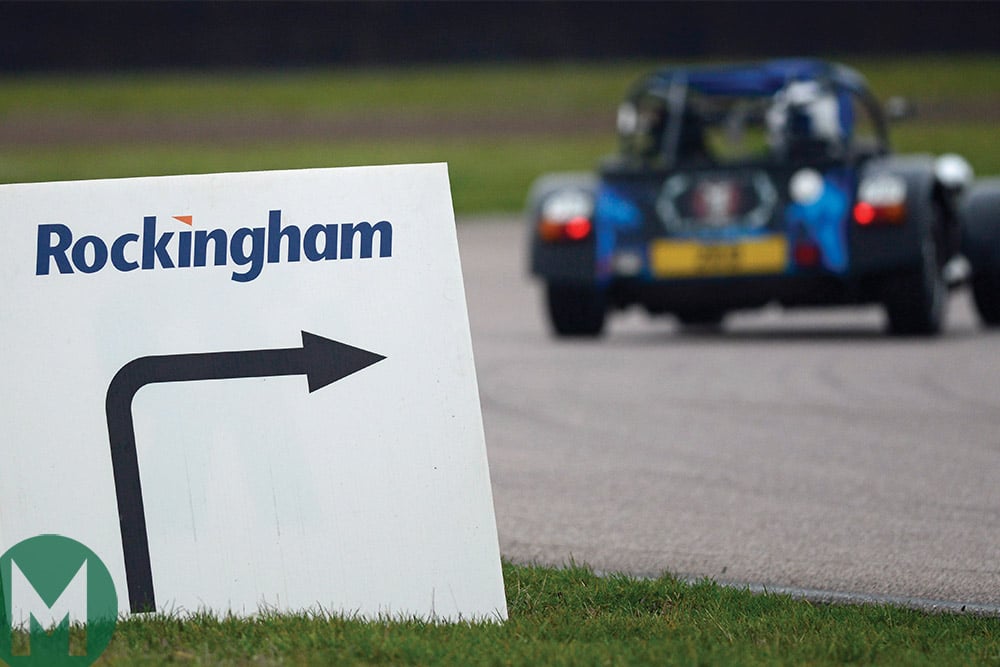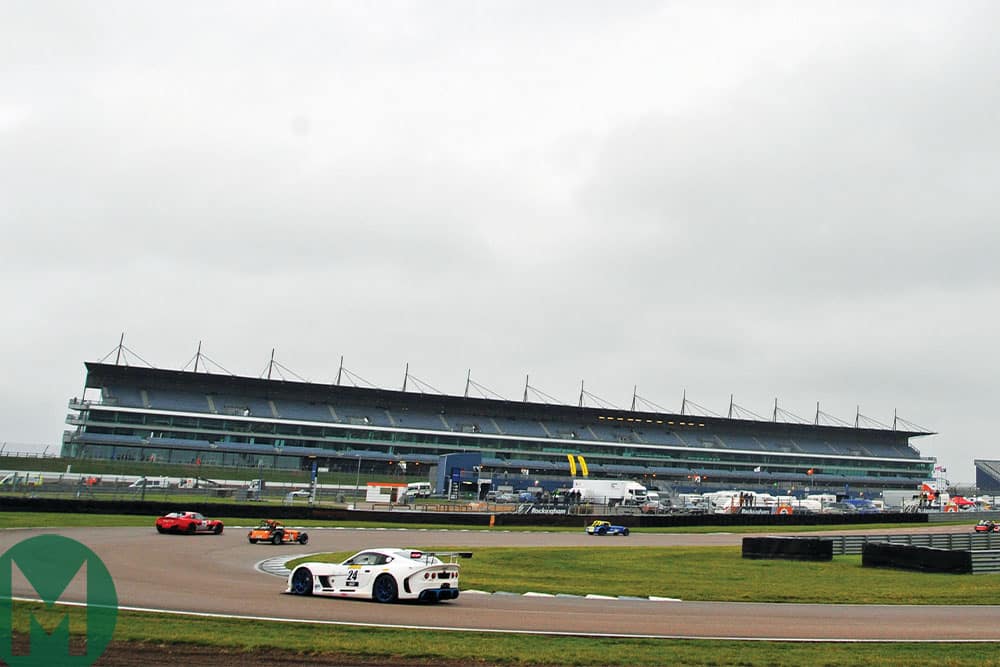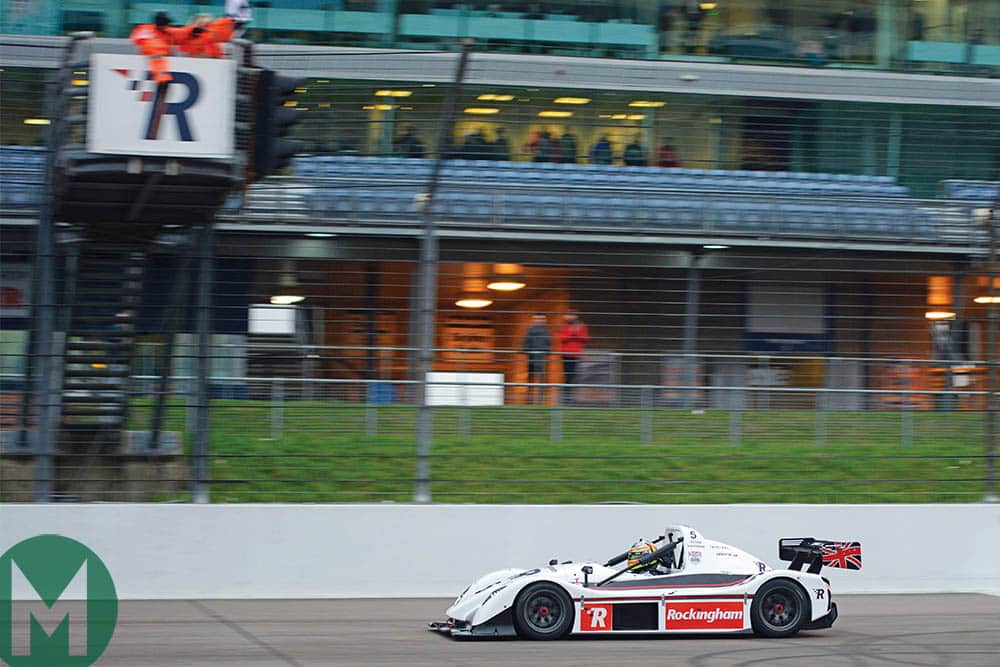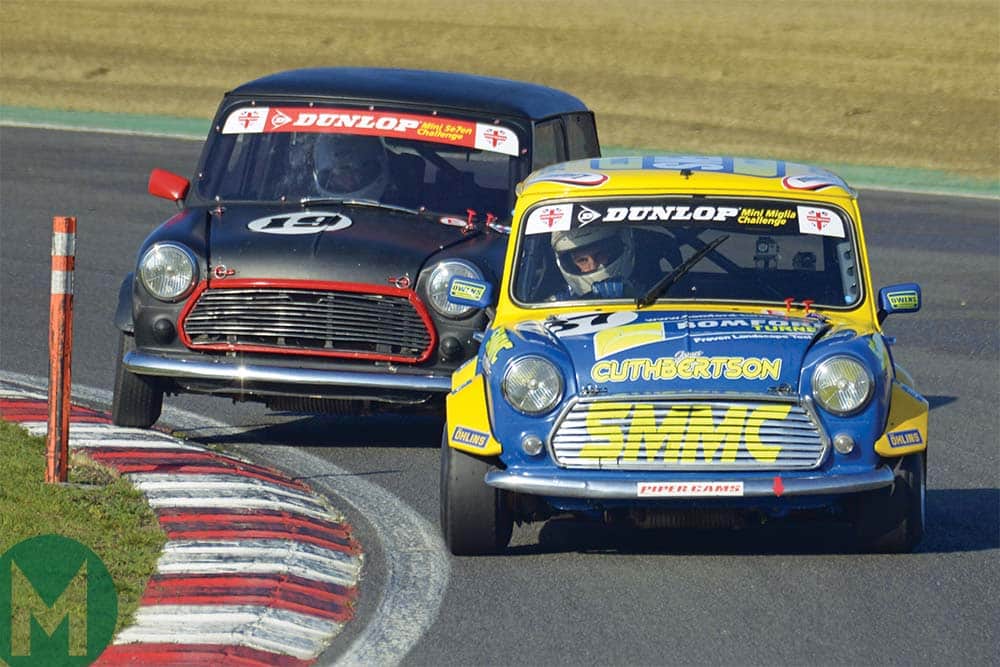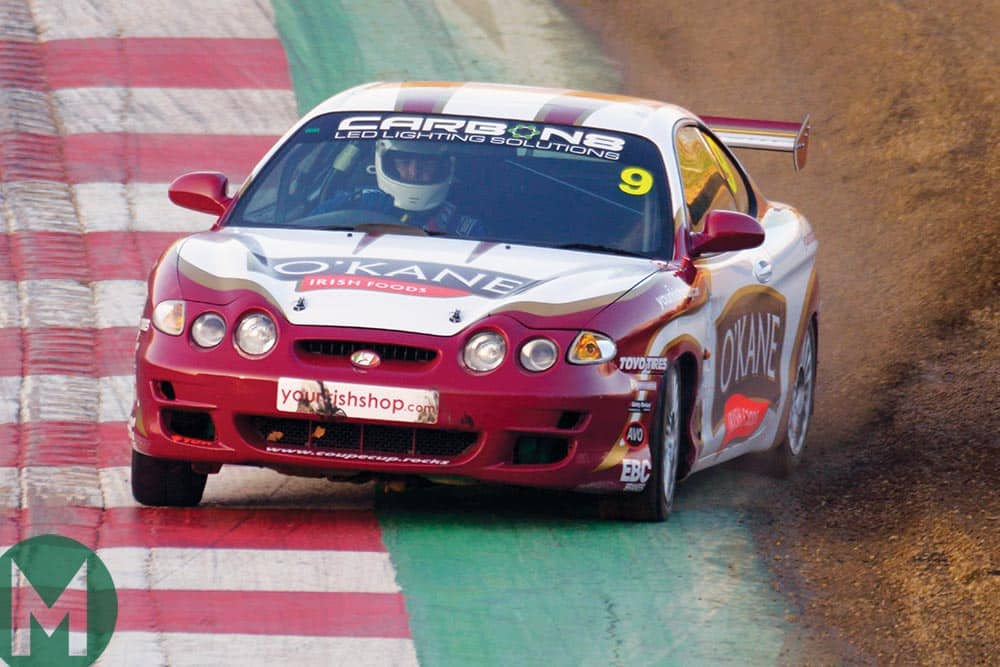Club Racing & Beyond
It’s not just the UK racing season that has wound down. Time is up, too, for Britain’s newest track. Incorporating the nation’s first banked oval since Brooklands, opened amid great fanfare in 2001 and twice a host to America’s now-defunct Champ Car series, Rockingham will henceforth be used as an automotive storage hub before, in time, being redeveloped. Housing? Retail? Who knows? The only certainty is that there will be no more motor sport.
After six years, it is also the end of the road for this column in its current form. Fitting, then, that it should sign off at Brands Hatch, the circuit that has featured most frequently herein.
ROCKINGHAM
I’ll confess that I didn’t attend often. The circuit’s location, within Corby’s industrial fringe, gave it a slight sense of soullessness – as did a couple of grandstands that have long stood condemned – but it retained the capacity to surprise. On the morning of the Super Send-Off, its valedictory race meeting in late November, there were kestrels hovering above the circuit and a colleague spotted a deer in the car park. Rockingham was never likely to be an Attenborough magnet, but nor was it wholly cars and concrete.
Despite the drainage problems that delayed its first Champ Car race in September 2001, that remains one of the most compelling racing spectacles I’ve witnessed in the UK. Gil de Ferran and Kenny Bräck, two drivers who somehow contrived never to land a Formula 1 race deal, swapped the lead as they worked through traffic and the Brazilian repassed at the final corner to take victory. He did it around the outside, too.
As a guide to that afternoon’s flavour, Mrs Arron – no great fan of the sport – asked at one point if I could nip away to get a couple of drinks for the kids, because she was engrossed and didn’t want to miss anything. That hadn’t happened before – and hasn’t since.
The swansong, on the infield road course, was never likely to be quite so spectacular, but as farewells go it was decent – not quite ‘run what you brung’ but an old-fashioned clubbie, two races apiece for sports/GTs, saloons and single-seaters, plus a 60-minute enduro for anything bar the latter. The single-seater entry was weak, but the other races attracted strong – and very diverse – entries. Radical SR3 vs Citroën C1? Step this way…
The driver of said Radical was circuit CEO Peter Hardman, an accomplished competitor of long standing (and a front-runner in junior Formula Ford back in 1983). He went on to win three of the seven races and put his name in the record books as the last driver ever to chalk up a Rockingham victory. Luke Souch (Mazda MX-5) became a motor sporting footnote, too, as the final participant to be classified in a race at Rockingham, one lap in arrears in 23rd position. And, after a run of just 18 seasons (not quite longevity on a Shelsley Walsh scale), that was that.
A lack of financial viability stopped the Champ Car fixture after a couple of seasons, but over time Rockingham drew high-profile national categories – British Touring Car Championship, F3, British GT – and its banked oval remained in limited use, predominantly in recent years for the BARC’s Pickup Truck Championship.
It was also a friendly venue, with elevated seating (in the one non-derelict stand) that offered decent views across the whole site and – a thoughtful touch – raised platforms at ground level to enable spectators with cameras to shoot over rather than through the debris mesh.
It is unlikely ever to be mentioned in the same breath as Brooklands or Crystal Palace, but I suspect it will be missed.
BRANDS HATCH
In the slipstream of its high-profile finales for the BTCC and the British Superbikes, Brands Hatch maintained its tradition of hosting race meetings through until mid-November. Ever since Jonathan Palmer’s MSV took over management of a selection of British venues in 2004, it has ensured that all are used as often as local planning permission (and available daylight) allow…
Although it no longer has its lustre of yore (with entries now around the 80 mark, rather than close to 200), the Formula Ford Festival remains a very fine event and, along with Silverstone’s Walter Hayes Trophy, provides some of the most reliably entertaining racing on the planet. There was even a building queue at the main gate by 9am on Saturday morning. And there is always a sense of brewing anticipation when a Formula Ford 1600 chain lines up at the pit exit, steam shimmering from exhausts in cool autumn sunshine.
Delays with red flags and safety cars meant it was nigh-on dark by the time the final commenced in earnest, but the absence of headlights did nothing to dilute the ferocious precision of a lead duel between Niall Murray and Josh Smith. In a race reduced by circumstance to just eight laps, Smith pulled off a last-lap pass at Druids to take the flag by 0.087sec – quite a sizeable margin by the standards of the weekend. Benn Tilley won both Classic FF1600 races after epic duels with Scott Mansell, the first by 0.016sec and the second by a slightly more comfortable 0.022.Neither driver was sure who had won until they returned to the pits; motor racing is seldom better than this.
And credit, too, to veteran Stuart Kestenbaum, whose antique Crosslé 16F seemed to appear in most of the FF1600 races. He’d probably have sneaked it onto the Ford Fiesta grid, too, had an opportunity presented itself.
The seasonal fare continued with classic touring cars, the Formula Vee Festival and two Dunlop Endurance Championship ‘into the night’ races, in which ‘night’ translates to about 4pm. Admitting everything from McLaren 570S GT4 to Smart ForFour via Saker and Lotus Elise, the DEC would be engaging in daylight, but no matter whether you are at Daytona, Le Mans or just down the road from Swanley, our sport always has a little extra zest beyond dusk.
This meeting also confirmed that Mini Sevens and Miglias remain every bit as captivating as they have been for more than half a century (even when there aren’t really enough of them on the grid), that MSVR’s Trackday Trophy is a fantastic starting point for budding racers and that the Hyundai Coupé Cup is an emerging force in the world of relative affordability.
A few seasons ago it ran concurrently with other series due a shortage of cars, but there were more than 20 on the grid at Brands and the lead tussles between Steve Kite and Wayne Rockett illustrated the ancient art of how racing should be conducted. They took one win apiece – and their second encounter was particularly entertaining.
“That’s the way things should be,” said the victorious Kite. “We all have to go to work on Monday and this is only a hobby, so everybody wants to enjoy it.”
Rockett’s response? “Second feels as good as a win after a race like that.”
Right formula, right attitude.
